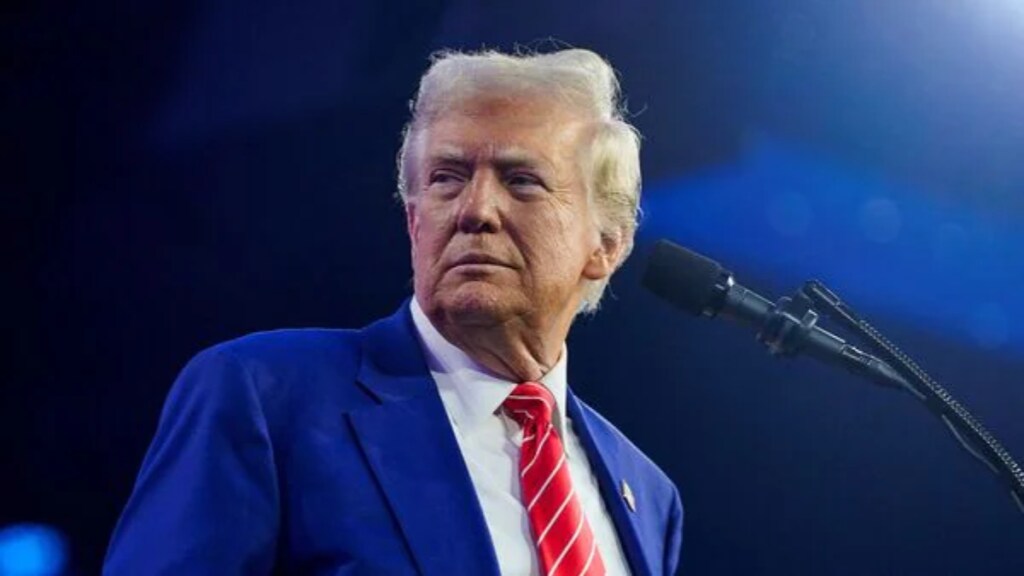With US President Donald Trump moving forward with 25 per cent tariffs on Canada and Mexico and also an additional 10 per cent tariff on China, Nomura said that China, amongst Asian countries, is at the centre of Trump’s America First Trade Policy (AFTP), but the rest of Asia is also at risk. Trump’s America First Trade Policy is centered around trade imbalances, reciprocal and sectoral tariffs, as well as potential punitive measures on third countries that are used for tariff circumvention. “Asia is in the line of fire,” Nomura said.
It is worth noting that Asia runs a large trade surplus with the US. Of the top 11 countries with which the US runs a trade deficit, seven are from Asia, including China (#1), Vietnam (#3), Taiwan (#6), Japan (#7), South Korea (#8), India (#10) and Thailand (#11), Nomura stated. Interestingly, Vietnam’s exports to the US account for a quarter of its GDP.
“Other Asian countries vulnerable to higher US universal tariffs include, Taiwan (value added of 6.3 per cent of GDP in US exports; mainly in electronics); Thailand (5.6 per cent; in electronics, wood products, agriculture products, machinery, other manufactures); Malaysia (4.6 per cent; in electronics, wood products and machinery); Singapore (4.5 per cent; in electronics, pharmaceuticals, other manufactures); and South Korea (4.5 per cent; in motor vehicles, electronics, machinery),” Nomura’s analysis stated.
How will tariffs be decided and who will be impacted more?
Trump’s reciprocal tariffs will be imposed based on tariff gap, VAT and non-tariff barriers, among other factors. Now, emerging Asian economies, especially India and Thailand, have higher relative tariff rates (on US exports), especially in agriculture and transportation. “Broadening the criteria to include non-tariff barriers increases the likelihood of the imposition of a reciprocal tax across a broader swath of emerging and developed Asian economies,” Nomura said.
Unlike tariffs, non-tariff barriers are harder to quantify. They include import policies, sanitary and phytosanitary measures, technical barriers to trade, export subsidies, a lack of intellectual property protection etc. According to a 2024 USTR report, China, India, Indonesia, the Philippines, Taiwan and Thailand have higher non-tariff barriers.
Sonal Varma, Chief Economist – Asia ex-Japan and India, Nomura, said, “To objectively quantify non-tariff barriers, we use the WTO’s Integrated Trade Intelligence Portal. This shows China and India as having the highest non-tariff barriers in Asia, with both countries using antidumping measures as a retaliatory tool.”
“Developed Asian economies have also imposed non-tariff barriers via sanitary and phytosanitary measures. These include Japan, South Korea and Taiwan, which also run a trade surplus with the US. Singapore, which runs a trade deficit with the US and has low trade and non-trade barriers, appears least at risk from a reciprocal tax. Determination of the reciprocal tariff was hard enough using just tariffs. Broadening the criteria to include non-tariff barriers makes the process more complex and less transparent, she added.
Sectors most at risk
Donald Trump has proposed tariffs on semiconductors, pharmaceuticals, steel, aluminium, lumber & forest products (and potentially, copper). Per analysis by Nomura, 20.6 per cent of Asia’s exports to the US are at risk. For Korea, Japan, Malaysia, the Philippines and Taiwan, more than a quarter of their exports to the US could be impacted by the proposed sectoral tariffs. “By sector, Asia is most exposed to tariffs on autos, followed by semiconductors and steel,” Sonal Varma said.
Trump has also threatened to impose tariffs on chips. While it is uncertain whether he will carry out his threat or if this is a negotiation tactic to incentivize Asian fabs to invest more in the US, the threat cannot be ignored. “Given the presence of Asian economies across different stages of the semiconductor value chain, and the central role chips and electronics play in Asia’s growth, Trump’s threat cannot be ignored,” the Nomura report stated. However, it is worth noting here that imposing tariffs on chips is not easy, since the supply chain is very complicated, and production processes are geographically very dispersed.
“Our deep dive shows that the direct impact of higher chip tariffs on Asia will likely be modest, given limited scope for substitution in the US, but indirect effects are a bigger concern, as a slowdown in US consumer demand would impact Asian economies that are present across different stages of the electronics supply chain. Taiwan appears most exposed, followed by Malaysia, Singapore, Korea, Thailand and Vietnam,” Nomura elaborated.
Nomura estimated that the US imported $80 billion worth of chips from Asia in 2023, accounting for 82 per cent of total US chip imports.
How is Asia prepping for Trump 2.0?
Many Asian policymakers are stepping up on their plans to invest more in and import more from the US, lower tariffs on US imports, strengthen alliances outside the US, mitigate third country risks and position themselves to benefit from the next round of supply chain shifts, Nomura concluded.


